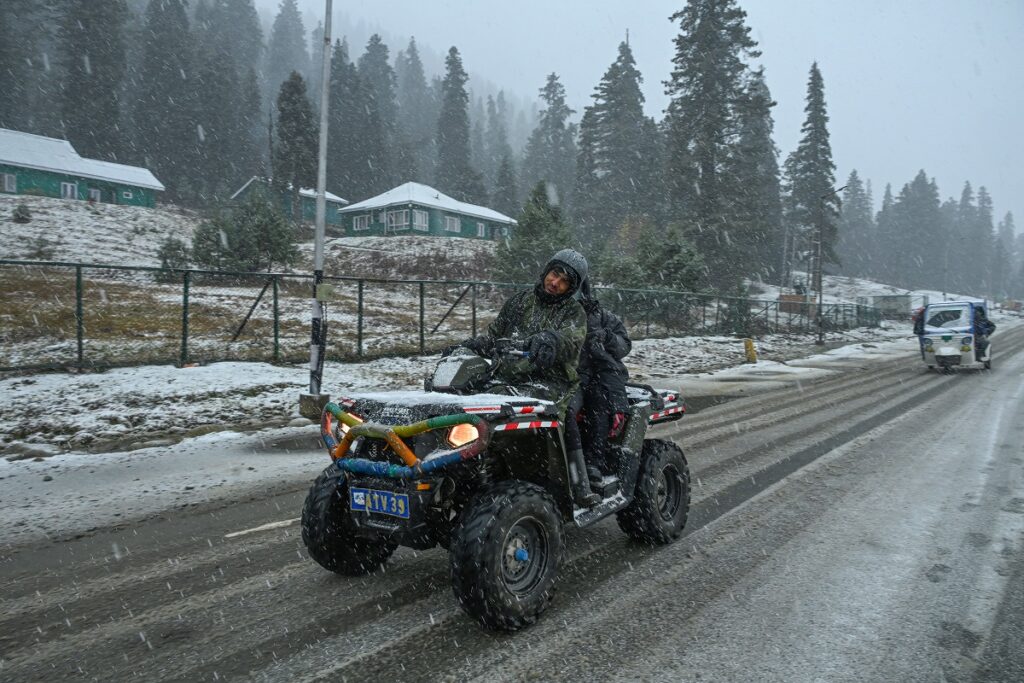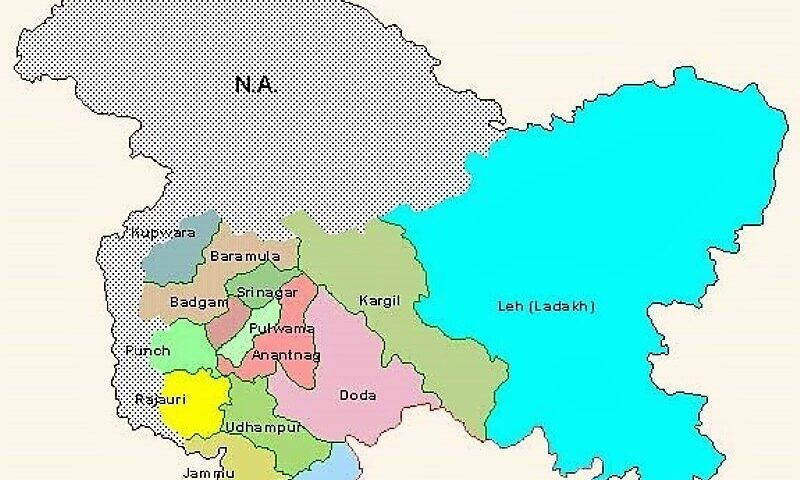Kashmir’s May 2025 Weather: From Heatwave to Unseasonal Snowfall
Srinagar 31 May 2025: In an extraordinary turn of events, Jammu and Kashmir experienced a dramatic shift in weather patterns during the last week of May 2025. Following a period of intense heatwaves, the region was suddenly gripped by unseasonal cold, heavy rainfall, and fresh snowfall in higher altitudes. This unexpected meteorological phenomenon not only disrupted daily life but also raised concerns about the broader implications of climate variability in the Himalayan region.MENAFN+1The Economic Times+1
From Scorching Heat to Sudden Chill
Record-Breaking Heatwave
Earlier in May, Jammu and Kashmir faced an intense heatwave, with several areas recording their highest temperatures of the season. Jammu, the winter capital, experienced a scorching 41.4°C, marking the hottest day of the year. Srinagar also recorded its highest May temperature in 60 years, reflecting the severity of the heatwave. The Economic Times
Abrupt Weather Reversal
However, this extreme heat was abruptly followed by a significant drop in temperatures. Intermittent heavy spells of rain drenched most parts of Kashmir, while the higher reaches received a fresh coating of snow, plunging temperatures sharply. The wet spell, which began on Thursday, intensified overnight and continued intermittently through Saturday, causing a significant drop in daytime temperatures, making it feel more like early spring than late May.
Rainfall and Snowfall: A Detailed Overview
Rainfall Statistics
According to the Meteorological Centre Srinagar, moderate to heavy rainfall was recorded in several districts. Poonch in the Jammu region received 39 mm of rain, while Baramulla in north Kashmir recorded 22 mm in the past 24 hours. Gusty winds accompanied the downpour, with wind speeds reaching up to 72 km/h in Samba, 65 km/h in Jammu, and 58 km/h in Kathua.
Snowfall in Higher Reaches
Fresh snowfall was reported from higher altitudes in parts of north Kashmir and around the Pir Panjal range. This unseasonal snow temporarily halted travel across some hilly routes, including the Mughal Road, which was closed for vehicles due to the inclement weather. Uni India
Temperature Deviations Across the Region
The sudden weather change led to significant deviations in maximum temperatures across various parts of the Valley:
-
Pahalgam: Recorded a high of just 8.2°C, which is 14.8°C below normal for this time of the year.
-
Gulmarg: A maximum temperature of only 6.8°C, 10.7°C below normal.
-
Srinagar: Saw a maximum of 14.5°C, 12.2°C below the usual.
-
Qazigund: Recorded 13°C.Tusk Travel+1Holidays Hunt Travel+1
-
Kupwara: 12.8°C.
-
Kokernag: 12°C.India Meteorological Department+1AccuWeather+1
These temperatures are significantly colder than average, making it feel more like early spring than late May.
Weather Advisories and Public Safety Measures
The Meteorological Centre Srinagar issued a weather advisory, warning of moderate to heavy rainfall at scattered places across Kashmir on Sunday, which may be accompanied by intense showers and gusty winds. There is also a risk of landslides and mudslides in vulnerable areas and flash flooding at isolated spots.
People living in landslide-prone areas or near riverbanks have been advised to remain vigilant. The public has been urged to avoid loose structures, electric poles, cables, and old trees, especially during intense weather events.
Impact on Transportation and Infrastructure
The inclement weather conditions led to disruptions in transportation and infrastructure:
-
Mughal Road Closure: Due to fresh snowfall in higher reaches, the Mughal Road was closed for vehicular movement, affecting connectivity between the Kashmir Valley and the Jammu region. Uni India
-
Jammu-Srinagar National Highway: A mudslide in the Chamba Seri area of Ramban led to the complete closure of the Jammu-Srinagar National Highway (NH-44). Authorities halted all vehicular movement, urging drivers and travelers to avoid the route until road clearance and improved weather conditions. The Economic Times
Broader Implications and Climate Considerations
The sudden shift from a heatwave to unseasonal snowfall and heavy rainfall within a short span underscores the increasing unpredictability of weather patterns, potentially linked to broader climate change phenomena. Such extreme weather events can have cascading effects on agriculture, tourism, and the overall economy of the region.
Farmers, in particular, may face challenges due to crop damage from unexpected weather conditions. Tourism, a significant contributor to the region’s economy, could also be impacted as travel plans are disrupted and popular destinations become inaccessible.
Looking Ahead: Weather Forecast
According to the India Meteorological Department, the weather is expected to stabilize in the coming days. However, residents and travelers are advised to stay updated with the latest forecasts and advisories. The Economic Times
Bottom-Line
The weather events of May 2025 in Jammu and Kashmir serve as a stark reminder of the region’s vulnerability to sudden and extreme climatic changes. As the impacts of climate change become more pronounced, there is an urgent need for adaptive measures, improved forecasting, and public awareness to mitigate risks and safeguard communities.




